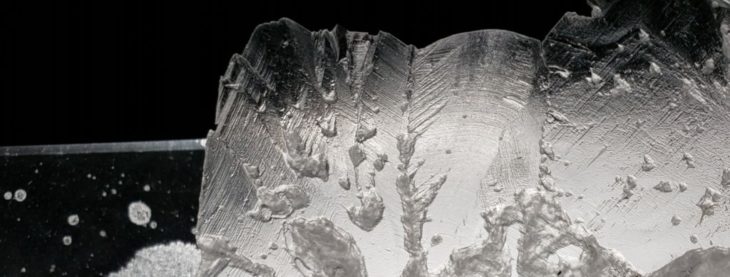
THE SALINE SOLUTION
The world’s population has been on a steady incline for the past fifty years. Increasing numbers of people around the world has yielded a greater need for resources. Yet as more and more people and resources come into existence a greater need there is for water.
From the Sea
Only 3% of the current world water is fresh and potable water. The other 97% remains unsafe to use by humans, unless processed.
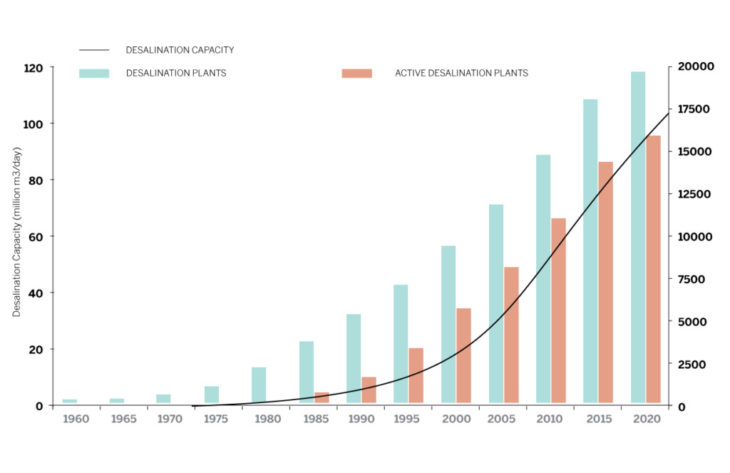
Desalination has risen in a similar parallel with the rise of the world population.
Although less than 1% of the world’s consumption stems from desalination there is a clear necessity for it’s technology. This rise in desalination does not only mean more fresh water, but it also means more waste.
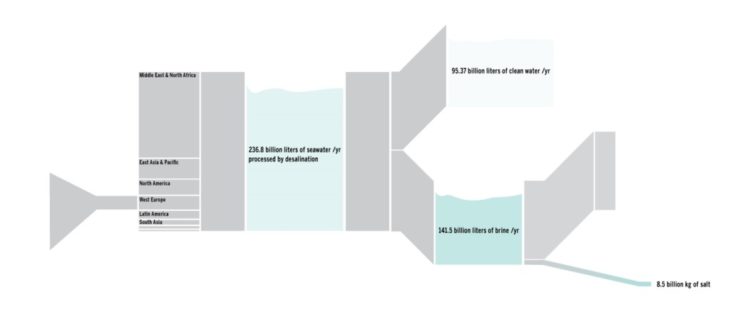
Toxic brine makes up around 60% of the products resulting from desalination.
The brine resulting from these processes is twice as salty as the water coming into the plants. Most plants, after they have extracted the water from desalination, pump the excess brine back into the body of water that it came from. This extra salinity causes disruptions in the ecosystems surrounding the plant and can have rippling effects on other environments.
Can this toxic waste product be used in a valuable and beneficial system within an urban context?
What makes sea water harmful to us and the other living things around us is it’s saline nature. Saline means to contain or be impregnated with salt. Sea water contains a variety of different salts, but the most well known is NaCl or Table Salt.
We took specific interest into the natural extraction of these salts by means of crystallization. Projects before have aimed to make use of the organic formation of these salts. The Crystallization Plant by Atelier Luma harnessed the growth of these salts to create salt panels that fit within an architectural setting.
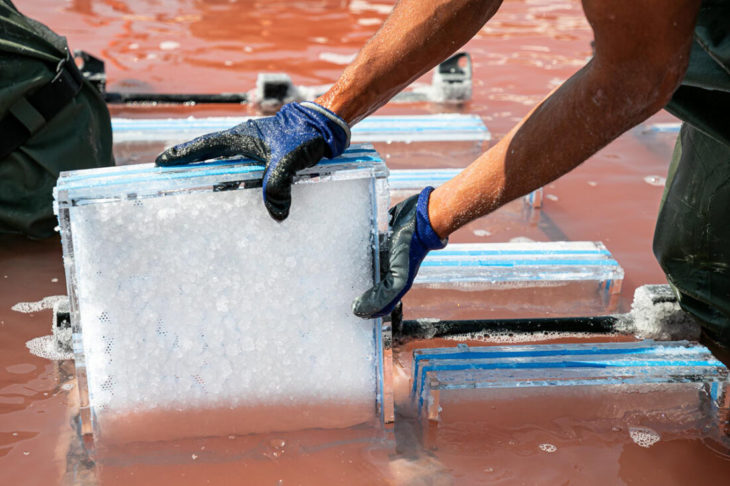
Crystallization Plant, Atelier Luma, 2021
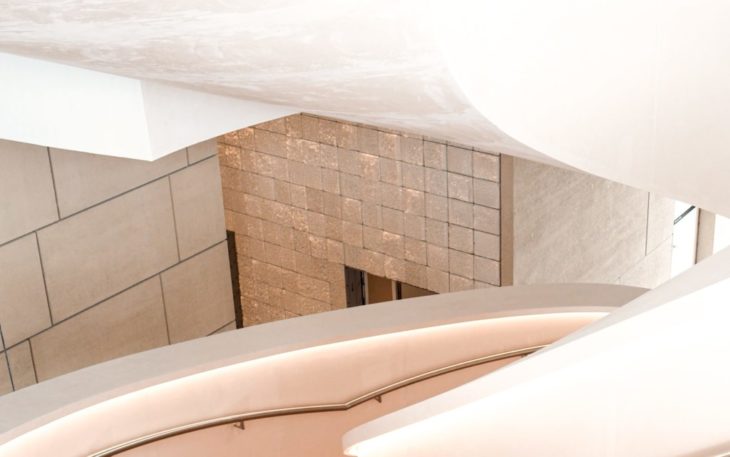
Crystallization Plant, Atelier Luma, 2021
A student from the University of Stuttgart also investigated the rigidification of fabrics into architectural elements using crystallization. The Dead Sea’s high salinity gave way to exploration into natural saline structures.
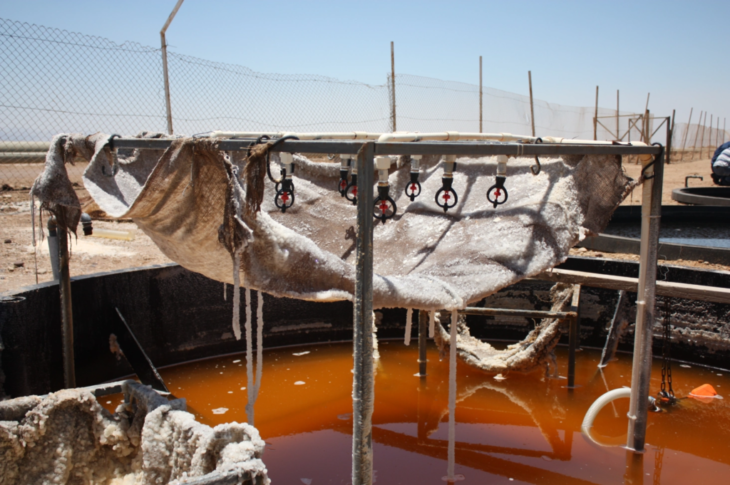
Growing Crystalline Structure, Yassmin Al-Khasawneh, 2015
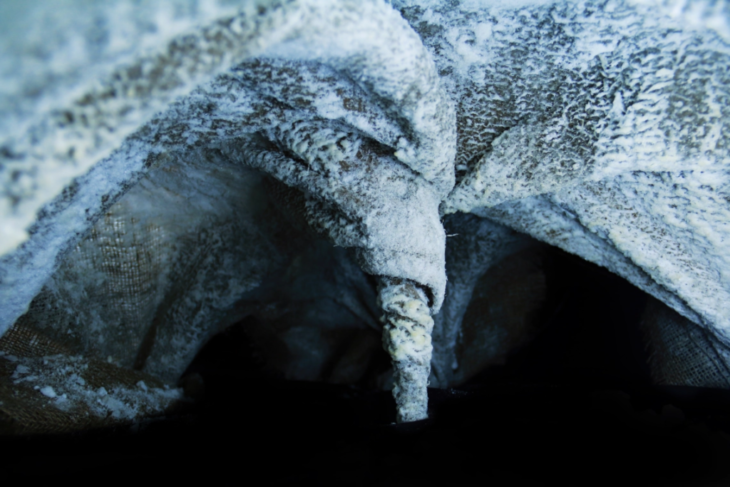
Growing Crystalline Structure, Yassmin Al-Khasawneh, 2015
Properties of Sodium Chloride
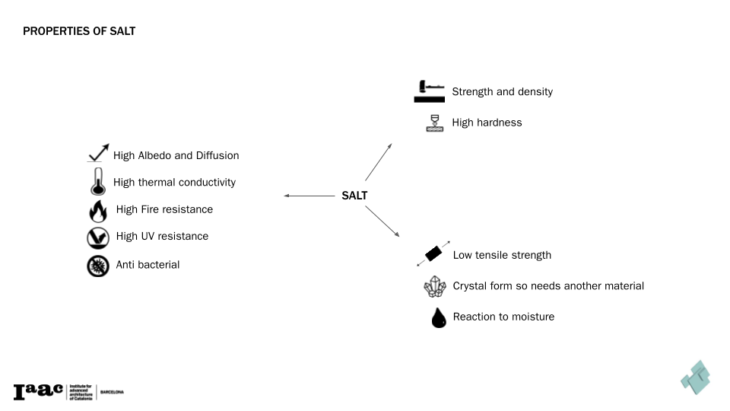
Developing our research further we dove deeper into the properties of sodium chloride that appeared most promising in providing a system to the façade of a structure. High thermal conductivity, anti-bacterial properties, UV resistance and fire resistance all stood out as important characteristics.
Then seeking out the best way to control the formation of this organic growth we conducted a series of experiments and tests to uncover a way forward.
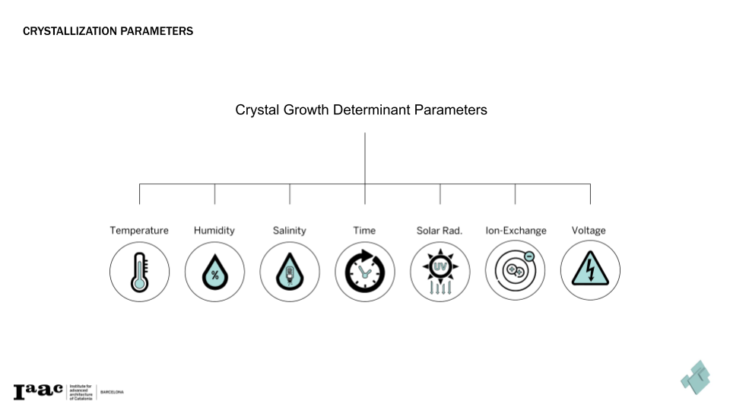
Defining crystallization parameters paved the way for varying tests of the growing capabilities.
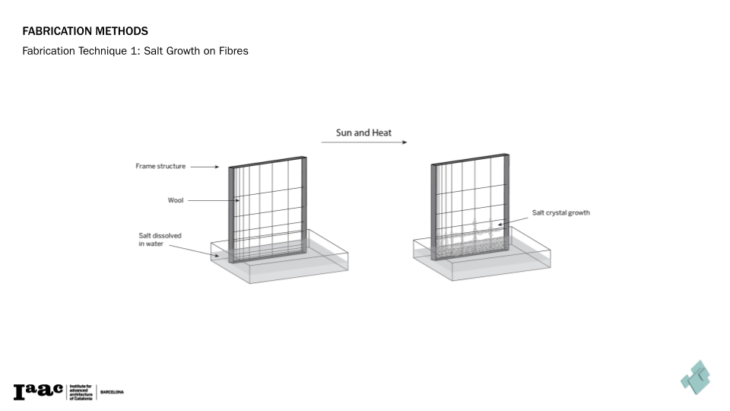
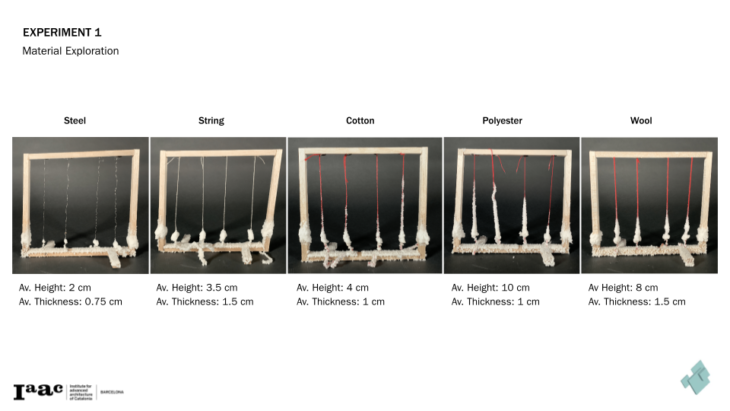
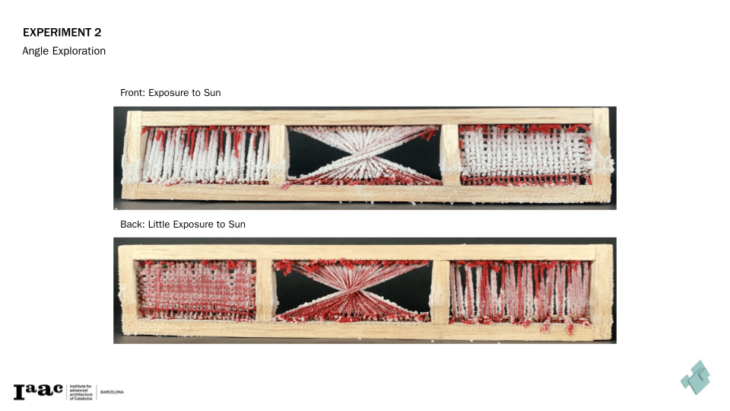
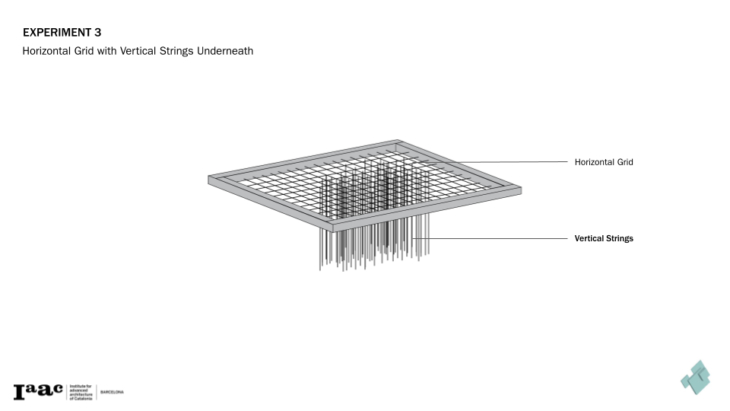
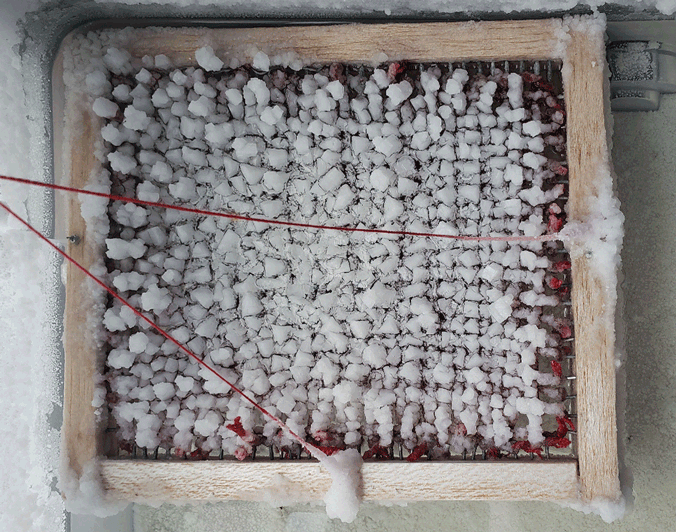
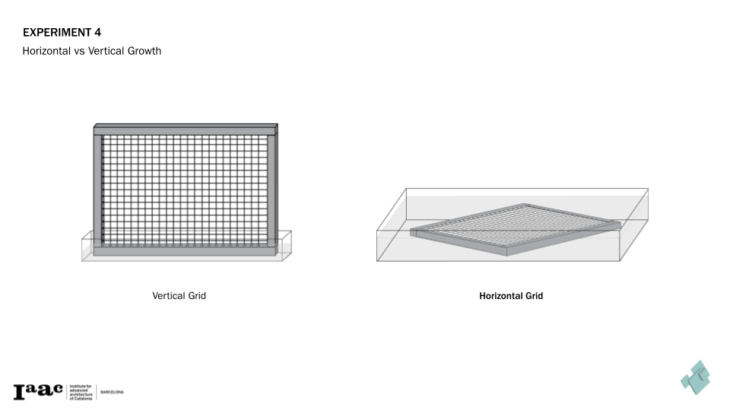
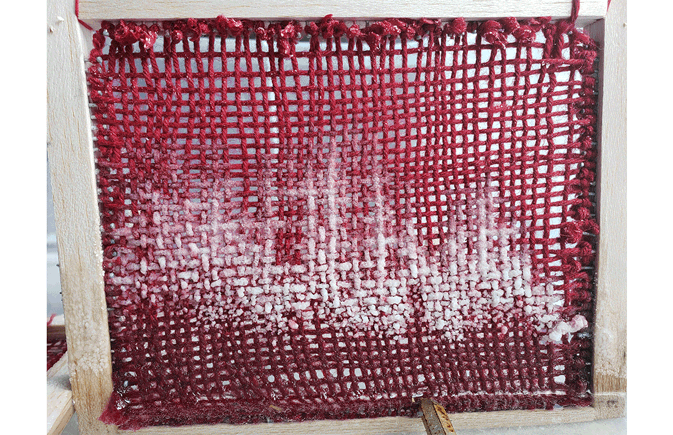
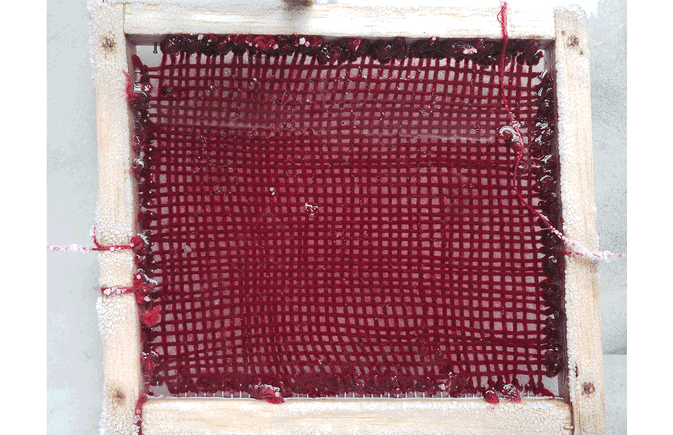
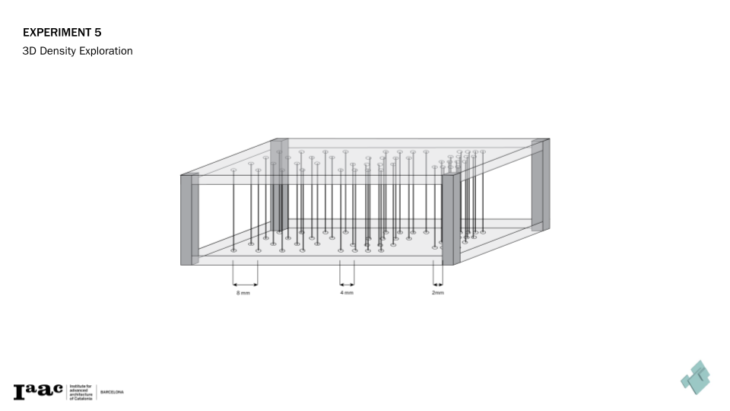
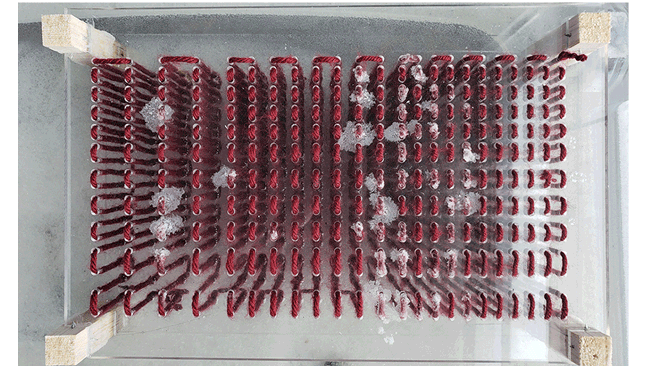
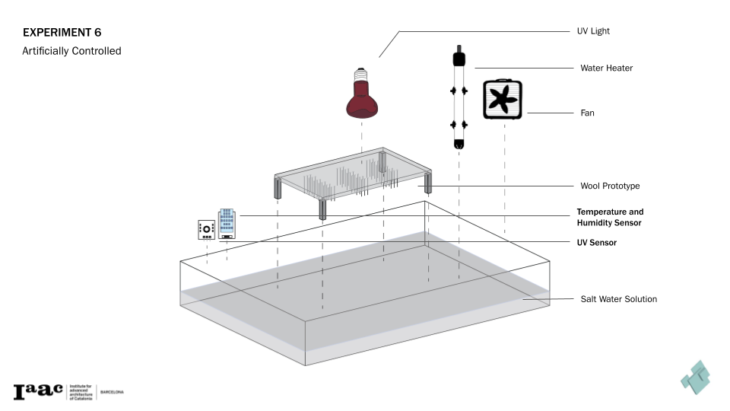
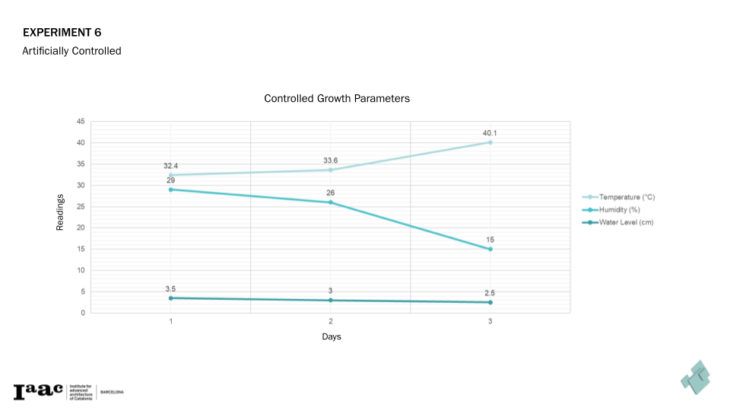
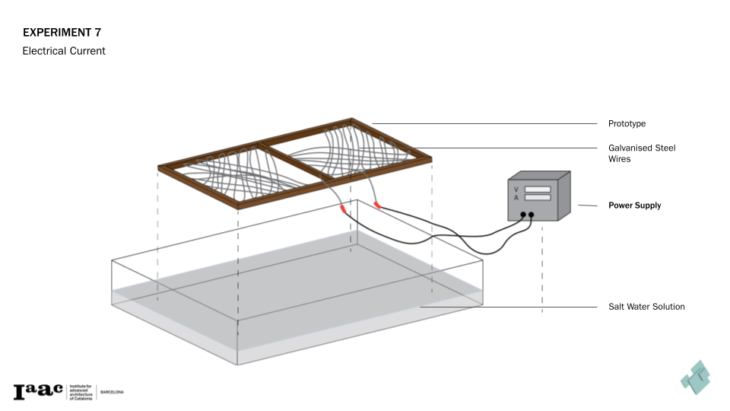
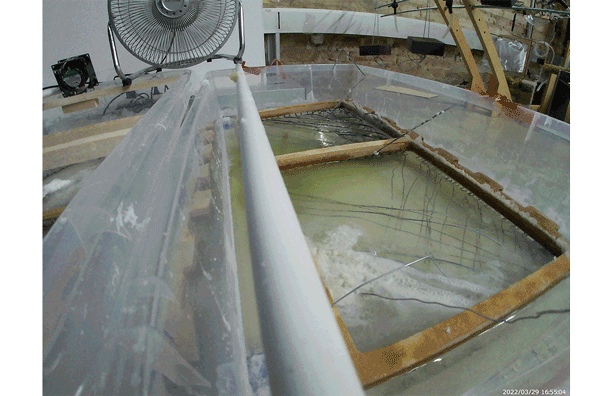
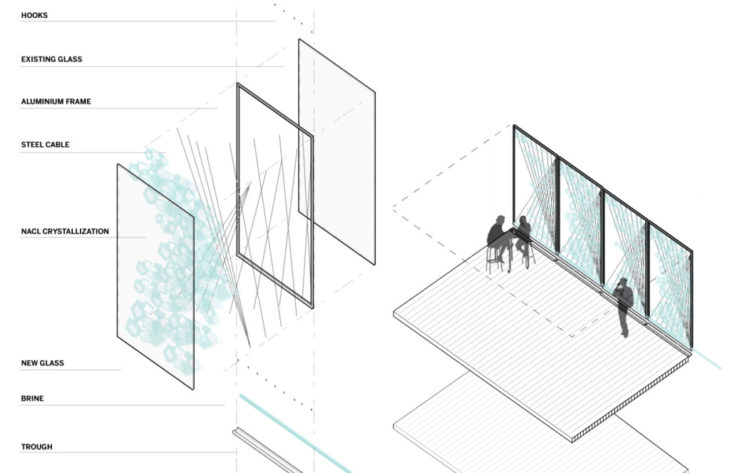
After conduction of the prior experiments we came to the conclusion that a system enclosed in two panes of glass would be able to support the growth of salt.
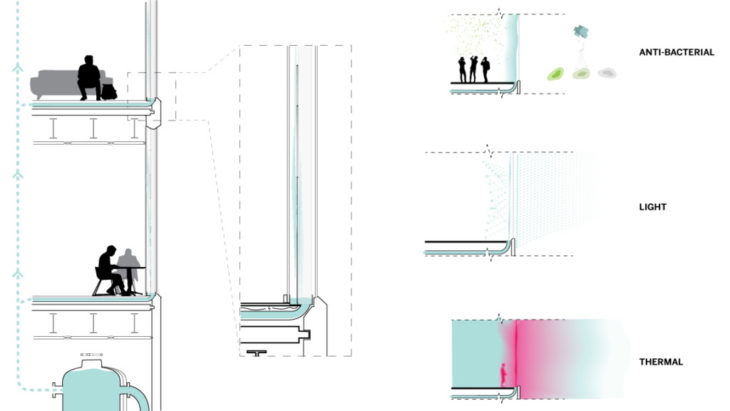
The system would be able to filter air, killing bacteria, diffuse light, and heat in the summer months. Growth of the salt would correlate directly with the amount of solar radiation each panel receives.
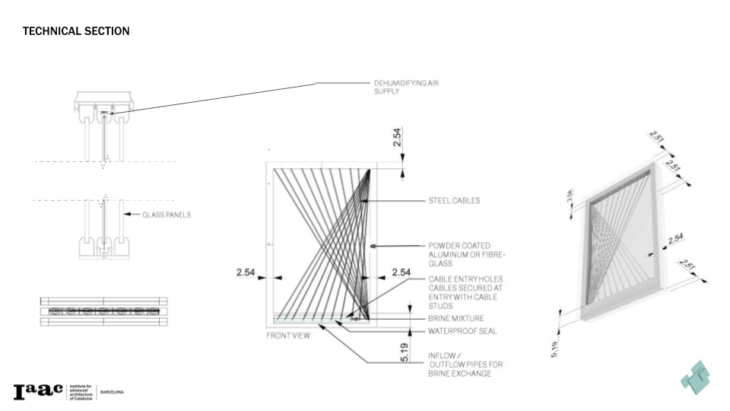
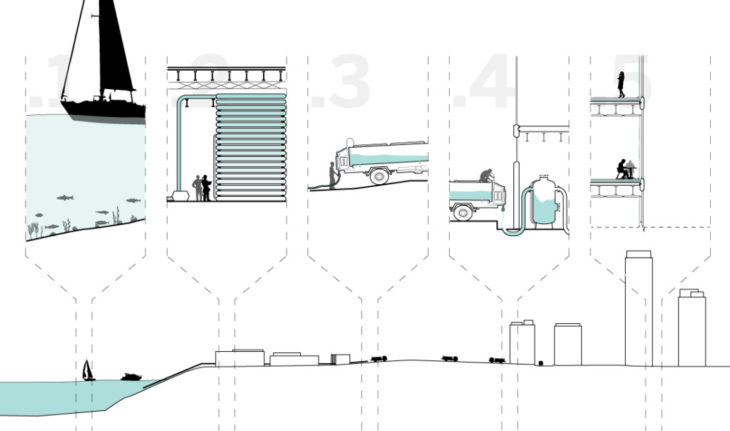
Brine created from desalination would be transported from the plants to storage facilities within the building in which the salinity of the brine would concentrate allowing crystals to grow within a matter of hours.
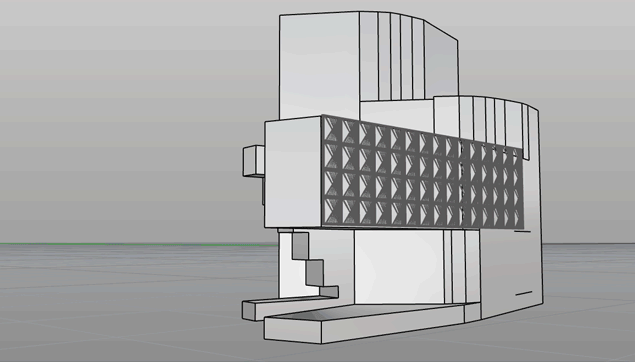
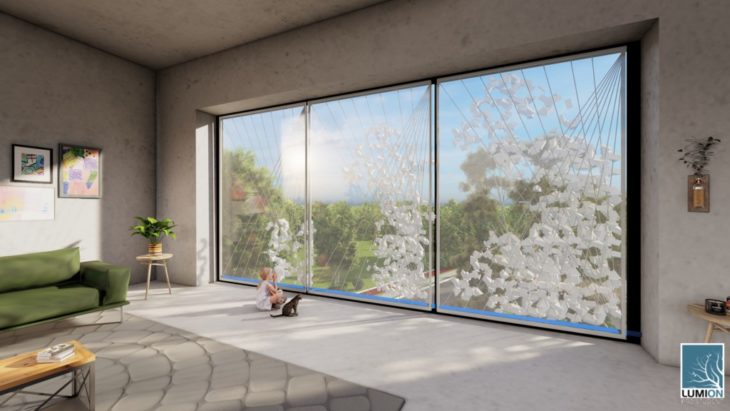
THE SALINE SOLUTION is a project of IAAC, the Institute for Advanced Architecture of Catalonia, developed during the Master in Advanced Architecture (MAA01) 2021/22 by students: Jack Davis, Emily Rackstraw, and Meagan Enright; Faculty: Areti Markopolou, David Leon; Faculty assistant: Nikol Kirova, Eduardo Chamorro Martin; Student assistant: Alexander Dommershausen.